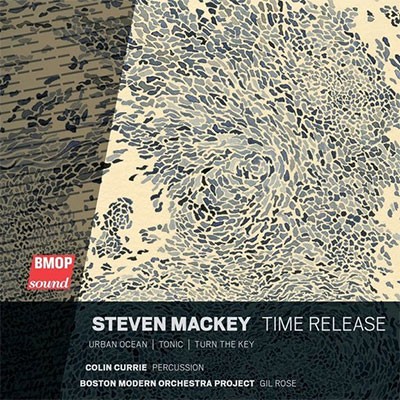perc.solo(mar/almglock/cowbells/peking opera gong/cyms/kick dr/samba whistle/flexatone/ride cym/vibraslap/crot)
2.2.2.2-2.2.0.0-timp-strings (8/6/4/4/2)
Abbreviations (PDF)
Boosey & Hawkes (Hendon Music)
When struck, a marimba note pretty much has its life mapped out for it. Call it destiny; the note will bloom, decay and die relatively quickly in a pre-determined time line. Notes played by the rest of the instruments in the orchestra have much more self-determination about how and when the sound is released. This puts the marimba at a disadvantage as a melodic voice which is a shame because, its tone, although short-lived, is distinctive and soulful.
Like the marimba, Colin Currie himself might be regarded as a melodic underdog simply because he is a drummer. However, I learned from a previous little piece I wrote for him that he has a beautiful sense of line. In the absence of the variety of articulations available to a string player to connect and release notes into melodic associations, Colin uses subtle nuances of time to shape and characterize melodies he coaxes vivid personalities from the bars with a sensitive and precise touch.
The evolution of the marimba as a mature melodic voice is a thread through Time Release. The marimba ornaments and embellishes the material of the orchestra in the first movement. It takes a more thematic role in the first part of the second movement with agile riffs and runs that are more rhetorical than melodic. Midway into the second movement the marimba introduces a jaunty tune and the third movement, is all about melody. It is a melody with wide leaps and angular contours yet with an ambling, folk music character making it better suited to the technique and cultural heritage of the marimba than any other instrument in the orchestra.
The life of a marimba note may be short and not subject to much influence from the performer after the attack, but it is quite complex. When struck the collision of mallet and bar releases a chaotic band of transient frequencies that we hear as simply the “clack” of impact. Because a marimba bar is bred to be resonant there are many more harmonic overtones that last a bit longer and give the marimba its characteristic “poing.” In its middle register the harmonics are rich and bell like with a warm bittersweet quality. The lower register has a mystery when played softly, and when played firmly with a hard mallet the overtones splinter, ever so briefly, into a rainbow of component harmonics before settling down to the fundamental. I highlight this feature in the first movement by using the winds to synthesize a sympathetic sustaining resonance for some of these otherwise time-starved partials of the sound.
In order to connect the sound of the marimba to the orchestra, the orchestra imitates the marimba’s “poing” by consistently combining a short note with a long note. The two notes together give the attack a particular character but one note is released immediately leaving the other plenty of unfettered time to attend to its linear and harmonic responsibilities. This is most explicit in the first movement and finds other more abstracted resonances in subsequent movements. For example, the trumpet fanfare at the beginning of the second movement leaves a lingering, high, soft, string sonority in its wake.
Paradoxically, by helping me integrate the soloist and the orchestra, my preoccupations with the molecular level of the marimba sound led me to compose a piece that is not really about the marimba but rather about musical lines, shapes, activities and the expressive potential they have for a listener. Colin and I both wanted our collaboration to result in a music that cast the soloist in a leading role but kept the musical story front and center. To be sure I want to showcase Colin’s formidable talents, but the quality that I find the most impressive is his deep musical understanding. As old fashioned as it might sound, I kept thinking of my favorite Mozart Piano Concerti and how the music is not a vehicle for the instrument but rather the two are merged so that my primary awareness is of how the music sings.
Time Release features the marimba but also contains some other instruments that extend the timbral and dynamic palette. I imagine a continuum connecting the "plink" of a wood block to the brittle high notes of the marimba, to the bell like mid range, to the plaintive almglocken to the clanking cowbells. At the farthest remove, the drums place in relief the overarching harmonic and melodic journey.
“Although the work centres primarily on the marimba, an exotic array of other instruments was also at hand to ensure the soloist was running the musical equivalent of a marathon.”
The Scotsman

Colin Currie, percussion /
Boston Modern Orchestra project / Gil Rose
BMOP/sound 1068

